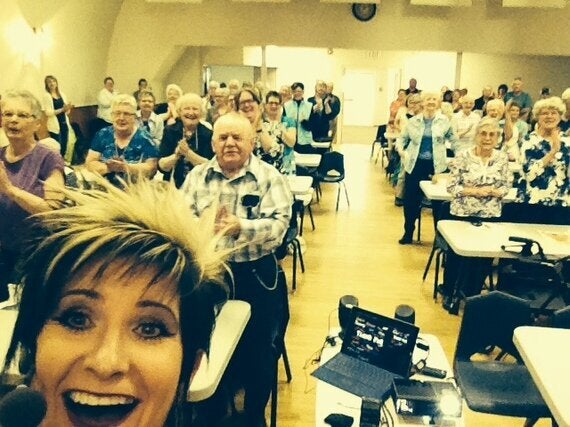
There is a lot of information available on healthy aging; and much of that writing includes strategies for a healthy brain, like this article by Michele Rosenthal titled 7 Ways to Exercise Your Brain - and Why You Really Need To!
When I spoke at a Senior's Wellness Day recently, I was reminded about how important it is for all of us -- at any age -- to practice strategies that help keep our thinking flexible and "buoyant" during every phase of our lives.

Three strategies that are particularly useful are 1) ReACT, 2) Reframe, and 3) ReAlign.
1) ReACT. Stuff will happen. No matter who you are, where you live, or what you do, your life will be filled with surprises - many happy ones and some that you'd rather avoid. When one of the latter happens in your life, instead of reacting impulsively (and often negatively) try this strategy to ReACT:
A: Accept your current reality. Say, out loud or to yourself, 'I accept (whatever it is that is negative).' For example, you might say 'I accept that my friend is showing signs of dementia.'
C: Choose a vision of what you'd like in this situation. When you decide what you want, your brain automatically moves into a more positive state. In the example above, you might say 'I choose to be a positive influence on my friend, and to enjoy spending time with her as much as I can.'
T : Take action to move toward your vision. When you are moving toward your vision (what you want), you are not gripped (and limited) by moving away from what you don't want (the negative situation). In this example, you might do the following: 'I will become informed about dementia so I can be a helpful resource for my friend.' 'I will visit my friend when I am well rested and am feeling good.' 'I will take my friend out for a walk or to enjoy a coffee at our favourite spot at least once a week.'
2) Reframe. Thoughts are just thoughts. They are not facts. When you experience a negative emotion, the internal dialogue you are having is generally negative and self-limiting. A reframe is a way of changing that narrative (thoughts) so that you can make the best choice possible in that situation.
Let's say a store clerk does not respond when you say "Thank you" after making your purchase. Your might feel angry, and your internal dialogue might be something like "These young people today have no manners! They don't care about giving great service, particularly when it is to an older person! They have no respect!"
You could choose to reframe these thoughts. Your reframe might be, "She must not have heard me say "thank you"; or "He is likely distracted with something important right now"; or "She might not have been trained how to interact with customers." Any of these reframes will result in a slight shift in your emotional experience. You might still like to have a "You're Welcome" when you say "Thank You" but you will not be focused, negatively, on a story about the clerk that serves neither you nor anyone who might run into you the rest of that day!
You might even decide to provide some feedback to the clerk -- to let him know that a "You're Welcome" would be most welcome to you! If you do decide to do that -- and you choose a softer reframe -- you'll be in a much more resourceful state when you provide that feedback. After all, remind yourself that the story you are telling yourself is just a story...so why not choose a story that helps you to be more positive and more effective in your interactions.
And, let's face it, you truly have no idea what might be going on for that clerk at that time and on that day. Your softened reframe, and helpful approach, might be just what that clerk needs in what might be an otherwise lousy day.
3) ReAlign. When you experience a challenging situation, choose a body exercise to help you realign your energy.
One of my favourites is called "Skiing." It is a wonderful body exercise to use when you find yourself feeling agitated and angry:
Stand feet apart, knees bent. As if you are skiing, bring your hands up and then down, allowing a "swoosh" sound to come out of your mouth as you breathe out. Repeat five to eight times or until you have released some of the angry energy. Notice your capacity to care, once the energy is released.
I also like "Hands over Eyes," a great exercise to use when you are feeling overwhelmed with ruminating thoughts:
Rub your hands together rapidly until they are warm. Place a hand over each eye. Notice how the soothing heat from your hands calms the state of your mind.
ALSO ON HUFFPOST:
